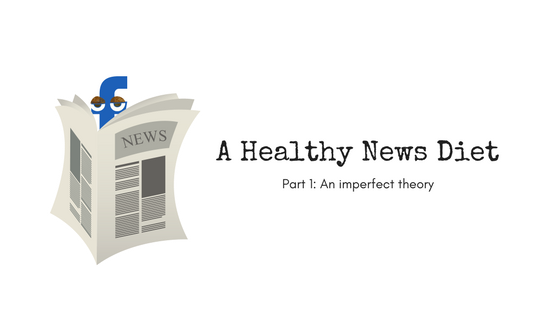Since before the 2016 election, but especially in recent months, my wheels have been turning about how to have a better, healthier information diet. There’s a lot of talk about fake news, media bubbles, information cocoons and “alternative facts”. As Cass Sunstein writes in his book #Republic (see Part 3 for a brief review), all of these things can mix together into a perverse soup of polarization and discord. While diverse perspectives can contribute to a robust marketplace of ideas, we quite often fall victim to the structural deficiencies of information exchange in the social media age.
These deficiencies can cause our attempts at communication to smash ungracefully into one another, with little chance for thoughtful consideration of different viewpoints. (See The Oatmeal’s great breakdown of the backfire effect, an unavoidable cognitive phenomenon that contributes to this problem.) And backfire is just one of many cognitive biases to which we unwittingly fall victim all the time.
But! There is a lot we can do to clean up our news habits* so we can minimize unhelpful “news junk food” and build in some healthy “news vegetables.”** First, some definitions:
- News junk food. News junk food includes attractive fake news, hyperpartisan news that conforms to our beliefs, coverage that mocks viewpoints with which we disagree, and any kind of clickbait. You probably need to consume less of it, and you would be fine if you eliminated it from your news diet entirely.
- News comfort food. Opinions and editorials from people with whom we share an ideology or common ideas, partisan news, and attractive headlines consistent with our own interests are okay in moderation, but we shouldn’t consume too much of them or we risk reinforcing our preconceived notions without properly challenging them.
- News vegetables. News vegetables include thoughtful opinions from people with whom we disagree, in-depth policy explanations, world news, and news about unfamiliar topics. It is likely that you are deficient in these news vegetables, especially if you get most of your news through social networks or specific-interest intermediaries. Like with vegetables, a diversity of sources is good. Getting all your vegetables from the Wall Street Journal or Vox isn’t terribly balanced, though it’s better than not reading those sources.
If we eliminate news junk food as much as we can and fill out our information diets with more vegetables and a little comfort food, we’ll probably be pretty well informed on a wide variety of topics and, more importantly, a variety of different perspectives on those topics. For many folks, reducing the comfort food is the most difficult part because our brains desperately want to confirm our prior beliefs. After all, it feels good to feel right.
See Part 2, where I lay out four steps for cleaning up your own news diet, based on my own experience over the past several months.
*I’m only referring here to news, where accuracy and context are crucial. Storytelling, art, satire, and personal anecdotes should be considered differently.
**As a nonpartisan organization we don’t typically talk about our personal politics, but it only seems fair to let readers know mine so you can assess the fairness with which I describe various news sources. I lean liberal in my politics and information sources. Call me on my BS by sending an email to jessie@healthydemocracy.org.


